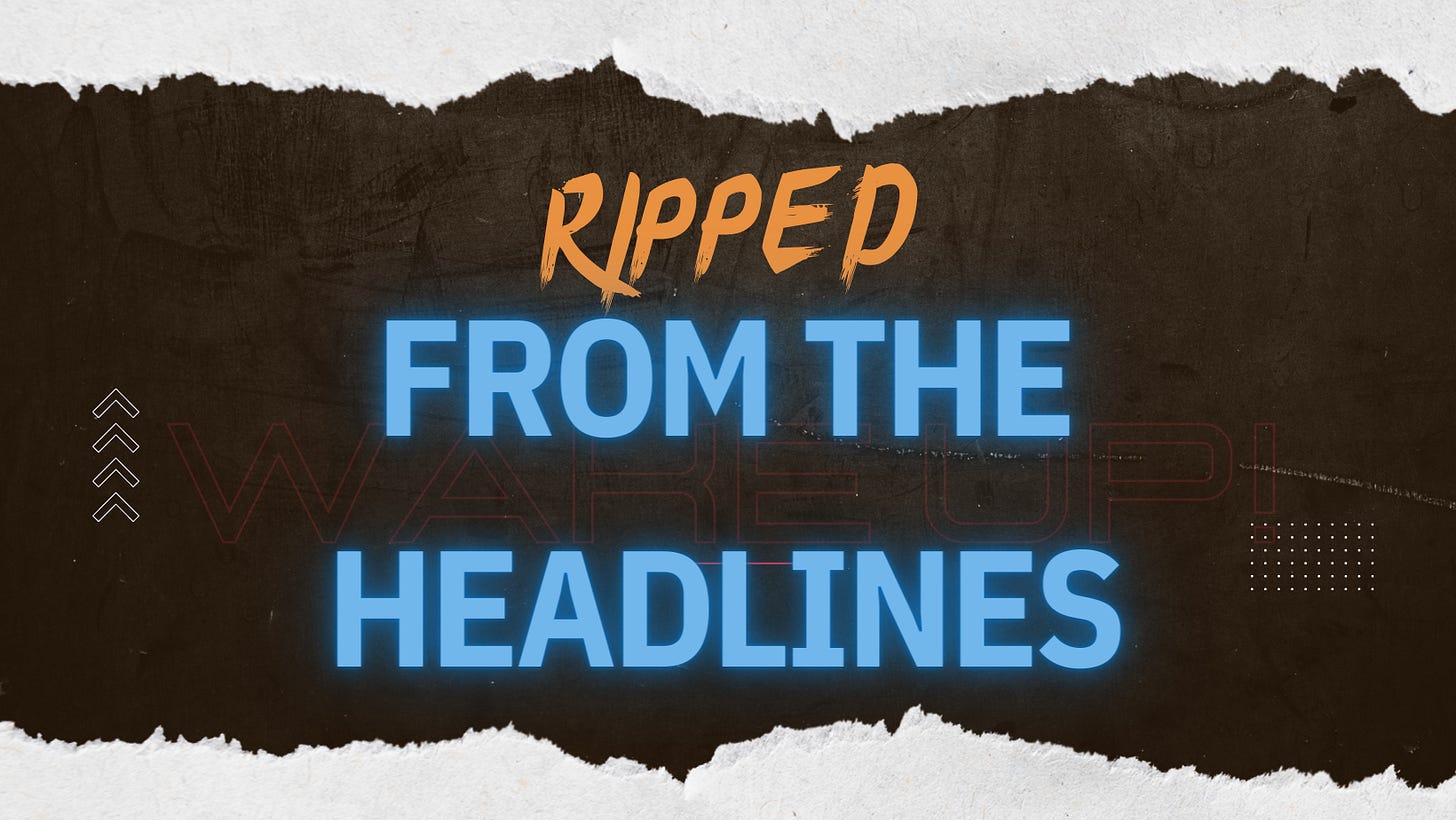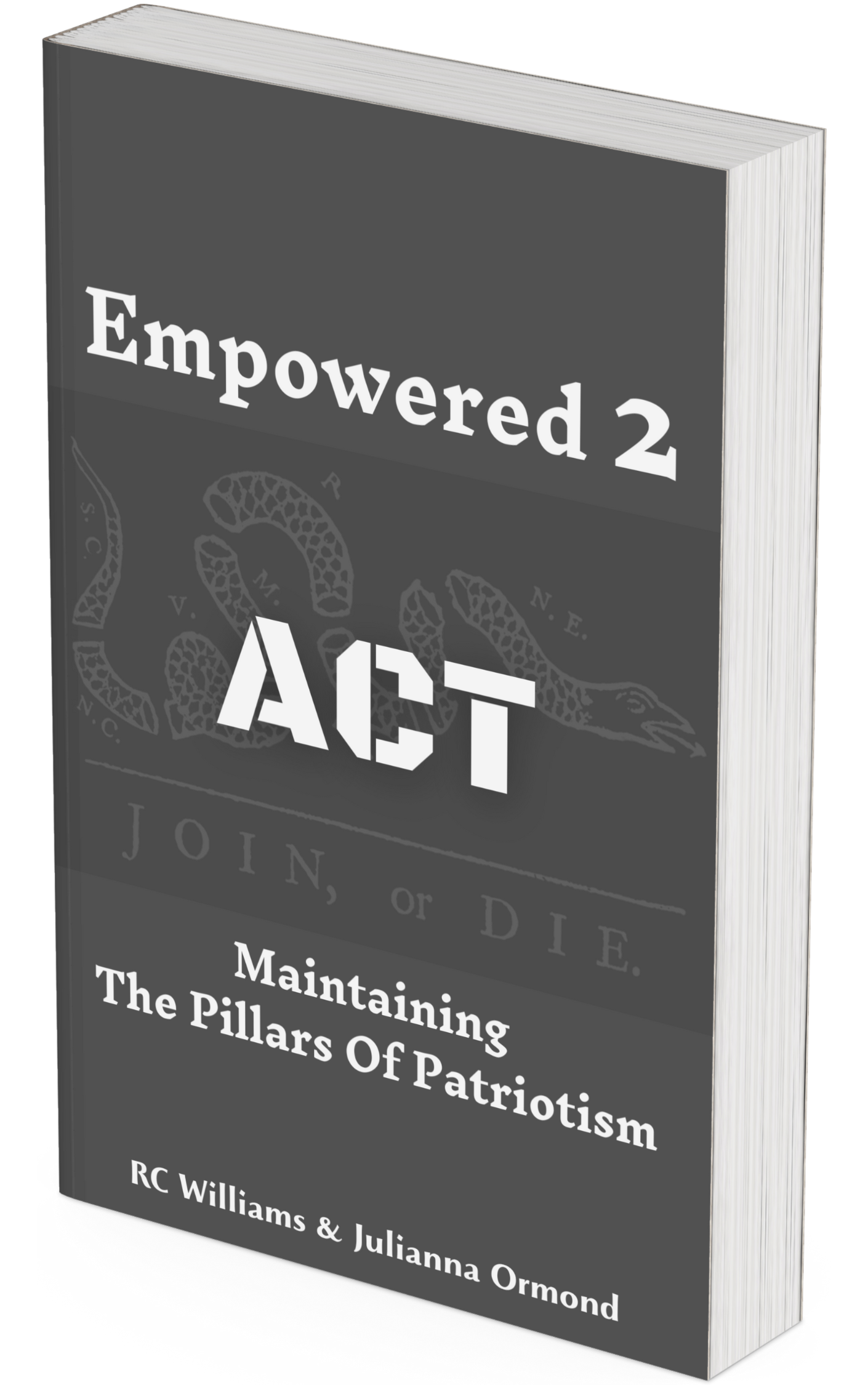WEDNESDAY DEEP DIVE: US Retail Sales Barely Increase In Sign of Consumer Strain - Ripped From The Headlines, June 19, 2024
In Today's Deep Dive, We Take A Look At What's Actually Happening With The Economic Strain For Consumers & Steps To Take - Read, Share, & Subscribe - SherlocExposes.com
Get the new e-book from Ripped From The Headlines publishers RC Williams & Julianna Ormond, entitled “Empowered 2 ACT: Maintaining The Pillars Of Patriotism.”
In the rapidly evolving landscape of the 21st century where the currents of change often erode the bedrock of our societal values, the call for patriotic activism rings out with renewed urgency.
"Empowered 2 ACT: Maintaining The Pillars of Patriotism," is not merely a response to this call—it is a clarion call of its own, a manifesto for those who stand on the front lines in defense of liberty, tradition, and the enduring principles that constitute the foundation of our society.
Click Here to read the full article.
“According to the latest report, U.S. retail sales in May experienced a marginal increase of 0.3%. The headlines herald this as a sign of economic resilience, but the deeper story reveals a more nuanced picture of consumer behavior and economic health.”
Hard Stop. Commentary: Mainstream media often clings to nominal growth figures, missing the underlying context. A 0.3% increase, while technically growth, falls short when adjusted for inflation and rising costs of living. The portrayal of this as a victory is akin to celebrating a minor patch on a sinking ship.
Let’s Continue.
“The rise, driven primarily by increased spending at motor vehicle dealers and building material stores, masks a broader slowdown in consumer spending. Excluding the volatile auto sector, sales remained flat, hinting at cautious consumer behavior amid higher borrowing costs and inflationary pressures.”
Hard Stop. Commentary: Excluding the auto sector—a significant part of consumer spending—reveals the real pulse of the economy. Flat sales elsewhere suggest consumers are prioritizing essential over discretionary spending, an indicator of financial strain rather than prosperity.
Inflation's Shadow Over Consumer Spending
“Consumer spending has been the stalwart of the U.S. economy, but the current inflation rate of 3.5% has started to erode purchasing power. Despite a slight increase in wages, real earnings remain under pressure, leading to a restrained approach to spending.”
Hard Stop. Commentary: Inflation, the unseen tax on consumers, continues to gnaw at purchasing power. The disconnect between nominal wage growth and real earnings is a critical metric often glossed over. Real earnings reflect true economic well-being, and their stagnation spells trouble for sustained consumer-driven growth.
“The Federal Reserve's aggressive monetary tightening has aimed to tame inflation, but it has also increased borrowing costs, further dampening consumer enthusiasm for big-ticket purchases. Higher interest rates on credit cards and personal loans mean that consumers are more likely to tighten their belts.”
Hard Stop. Commentary: Higher interest rates serve a dual purpose: controlling inflation and inadvertently curbing spending. This is the tightrope the Fed walks, balancing inflation control against economic growth. The unintended consequence is often subdued consumer expenditure, a sign of economic cooling rather than recovery.
The Role of Household Savings and Debt
“Household savings have dwindled from pandemic-era highs, with the savings rate falling to 4.6% in April from a peak of 33.8% in April 2020. This depletion of savings indicates that many consumers are relying on credit to maintain their standard of living, a trend that is unsustainable in the long term.”
Hard Stop. Commentary: The erosion of household savings is a critical red flag. While the pandemic-induced savings spike was an anomaly, the rapid decline to pre-pandemic levels underscores a growing reliance on credit—a risky strategy that can lead to a debt spiral if economic conditions worsen.
“Household debt levels have risen, with credit card balances hitting record highs. The rise in debt, coupled with higher interest rates, increases the financial burden on consumers, which could stifle future spending and economic growth.”
Hard Stop. Commentary: Rising household debt amidst increasing interest rates creates a precarious situation. Consumers are essentially using credit to bridge the gap between stagnant incomes and rising costs, a scenario that portends financial stress and potential default risks. This dynamic sets the stage for a potential debt crisis if left unchecked.
Retail Sector Disparities
“Not all retail sectors are feeling the pinch equally. Building material stores and motor vehicle dealers have seen gains, likely driven by a combination of factors including a housing market recovery and pent-up demand for vehicles. In contrast, sectors like electronics and appliance stores saw a decline, reflecting shifting consumer priorities.”
Hard Stop. Commentary: The disparity across retail sectors is telling. Essential purchases such as vehicles and building materials reflect necessity and deferred demand rather than discretionary spending. Declines in electronics and appliances point to consumers cutting back on non-essential items, a clear indicator of financial caution.
The Broader Economic Implications
“The slight increase in retail sales, while positive on the surface, may not be enough to offset broader economic concerns. The Fed’s ongoing battle with inflation, coupled with high consumer debt levels and a potential slowdown in wage growth, suggests that the economic outlook remains uncertain.”
Hard Stop. Commentary: The facade of resilience in retail sales must be viewed in the context of broader economic indicators. The Fed's policies, consumer debt levels, and inflationary pressures all contribute to a complex economic landscape where a marginal increase in retail sales is not a definitive sign of recovery, but rather a temporary reprieve in an ongoing struggle.
The Desert… Of The Real
“While May’s retail sales figures provide a glimmer of hope, they also underscore the fragility of the current economic recovery. With inflation, high borrowing costs, and dwindling savings continuing to challenge consumers, the path to sustained economic health remains fraught with obstacles.”
Hard Stop. Commentary: Economic resilience is not defined by nominal retail growth but by the underlying financial stability of consumers. The challenges facing the U.S. economy require a nuanced understanding that goes beyond headline figures, focusing on real purchasing power, debt dynamics, and the long-term sustainability of consumer spending.
Know. Your. Foe.
Please support our sponsor, EMP Shield!
Did you realize that even something like a solar flare can knock out your electronics? Or kill your car?
Yes, you could be partying like it’s 1859 in the snap of a finger…
Yikes.
Best to be protected right? But what to do?
Our friends at EMP Shield have it figured out. These guys are brilliant. They have EMP Shields for your car, home, and generator.
And it costs way less than you think.
Check them out today - click the link and save $50 on us.
Your future depends on it.
James Wesley, Rawles, publisher of SurvivalBlog.com has put together a “bookshelf” list of key things you should have. CLICK HERE to access the list.
Plus a recap of the 50 things you should have handy to barter.
Share this email with everyone you know. Sign up for a free or paid subscription. Paid members will receive our in-depth solutions.
Ripped From The Headlines is your daily digest of what’s happening in the world. We help you to understand what it means, why you should care, and what you should do.
Have a tip on a story, case, or issue that needs to be covered? Email us: info@investinanswers.com. Confidentially assured.







